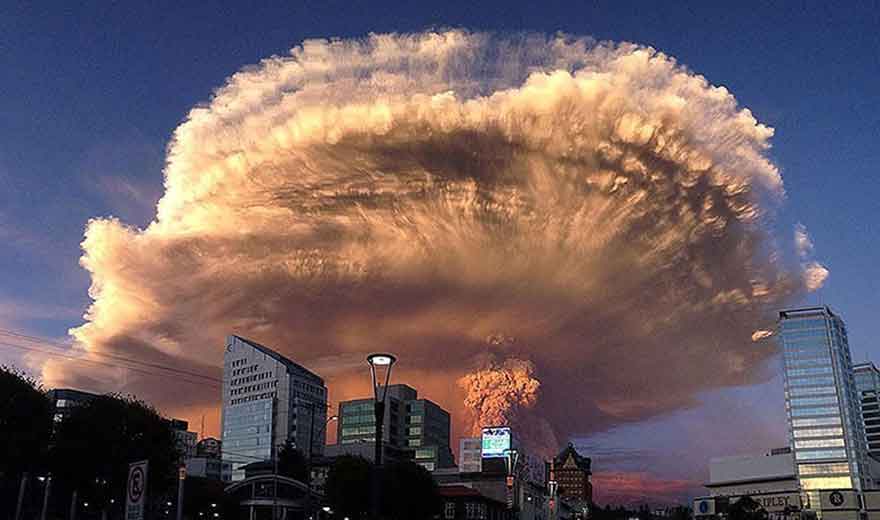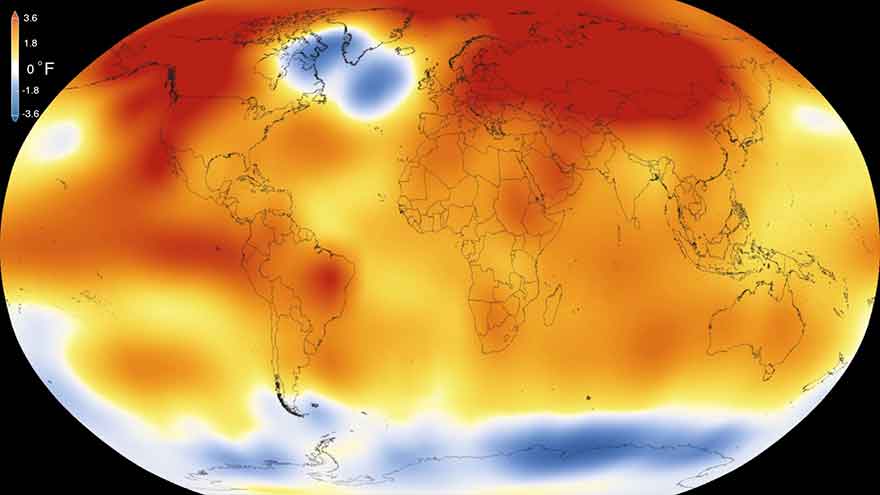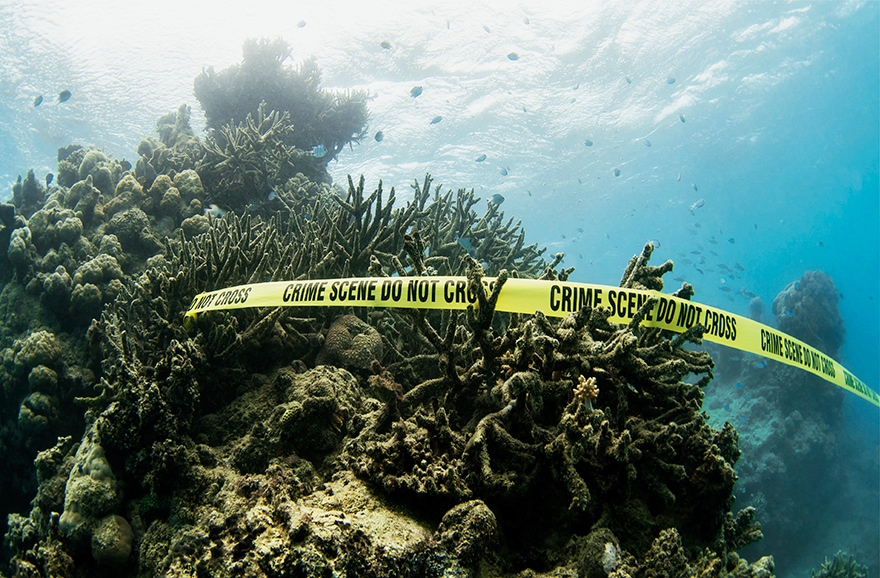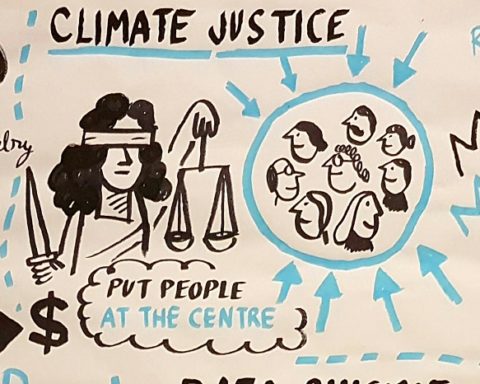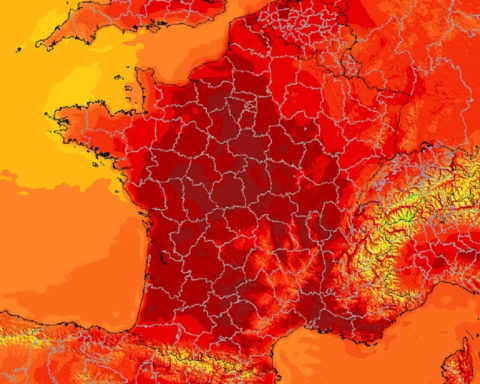The latest annual report on the state of the climate is indisputable: 2015 is the most catastrophic year for climate change in modern history. And 2016 looks even worse.
The fight against climate change has therefore become a matter of absolute urgency. Pathways to reduce greenhouse gas emissions and preventive adaptation measures are needed. Many sectors are concerned, from agriculture to industry, from transport to coastal protection. We need to intensify the actions undertaken, but can we implement more radical measures, such as climate geo-engineering? Opinions are divided at the Academy of Technologies, which has published a major report on the issue.
Ahe fight against global warming is more than ever at the heart of the work of many scientific teams around the world. The development of less polluting energy sources, CO2 capture and storage, alternative energies, and the number of projects underway, particularly in the context of the Paris Agreement (COP 21), are innumerable. « Failure to act would have serious and unacceptable consequences for France and the world as a whole. ». It is with this caveat that the report written by the Academy of Technologies Technology and climate change: solutions for mitigation and adaptation.
The report calls for mobilising or amplifying the technological potential to mitigate climate change or mitigate its expected effects. However, it is more cautious about technologies designed to globally modify the phenomena known to have an impact on climate change. The report focuses in particular on two geo-engineering techniques: one consists of intervening in the radiation balance by attenuating solar radiation in order to reduce the average temperature of the planet; the other concerns the extraction of atmospheric CO2 by modifying biochemical cycles.

The figure above shows the main concepts of climate geoengineering.
Atmospheric CO2 capture and storage pathways (in blue) are differentiated from management pathways
the radiative balance of the planet, in particular via solar radiation (in red)
the radiative balance of the planet, in particular via solar radiation (in red)
Reducing the radiation balance
Several technologies are currently being investigated to reduce the sun's radiation in order to temper the climate. Some of these methods are considered by the Academy of Technology to be unrealistic or dangerous:
- The installation of space reflectors allowing some of the sun's energy to be reflected back. This solution is mentioned as a possibility. However, the deployment of these reflectors has not been studied in detail, no doubt because of the low degree of realism of this technology, confirmed by a recent report by the Centre national d'études spatiales.
– Stratospheric injection of sulphur aerosolsThe use of the most credible methodology from a technological point of view, although not desirable, seems to be the most credible one. These technologies for injecting sulphur aerosols do not exist, but seem, according to the authors of the report, to be inexpensive to develop, at least in a fairly "rustic" manner. However, the Academy of Technologies points out that the effects induced by this method are not well known. The climatic changes induced by the injection of stratospheric aerosols are relatively difficult to control and their effects on the physico-chemistry of the stratosphere, in particular on the ozone balance, are still poorly known.
– Tropospheric seedingThe use of a reflectivity index, to increase the reflectivity of low clouds, has also been proposed, particularly over oceans. According to the report, climate effects are even less well controlled than in the case of stratospheric injection. These technologies are not simple. They involve the spraying of large quantities of seawater, which contains impurities, and evaporative cooling of the injected sea salt aerosols, which cause the air mass to fall back.
– Increase surface albedo is another method mentioned in the report. Albedo is the reflectivity of a surface. For example, snow-covered areas reflect more solar radiation, amplifying the cooling of the earth's surface. The Technology Academy reporters distinguish here between maritime surfaces (where an increase in reflectivity by microbubbles appears unrealistic) and continental surfaces where a more localized increase may be akin to adaptive techniques (more reflective crops, white-painted buildings).
In any case, a climate regulated by such solar radiation management technologies would nevertheless experience fairly strong residual changes on a regional scale, particularly in terms of possible changes in precipitation patterns.
Extracting CO2 from the atmosphere
The report lists a number of techniques or technologies that aim to address the root cause of climate change by reducing the amount of greenhouse gases (GHGs) in the atmosphere. While, in principle, these techniques or technologies can concern any long-lived GHG, in practice only techniques concerning carbon dioxide have really been considered so far. A number of approaches have been proposed:
– CO2 extraction via the terrestrial biosphere : reforestation, afforestation, increased storage in the soil through changes in farming and cultivation techniques, all these locally initiated techniques are practicable subject to realistic economic conditions .
– Carbon storage in soils via a "bio-coal" obtained by pyrolysis of the cultivated biomass. However, the storage life of such bio-coals is not precisely known.
– Extraction via the marine biosphere. Some ocean areas could indeed see their phytoplankton richness increased by the addition of fertilizers such as iron. Experiments of such oceanic enrichment have been carried out, but with very variable results: the 'phytoplankton - zooplankton - higher animals' chain is indeed very complex. The Académie des technologies recalls that these experiments are currently the subject of a quasi-moratorium.
– Atmospheric uptake by chemical pathways. Although the technologies have been identified (adsorption on solids, absorption by more or less alkaline solutions - CaO, NaOH...-, with or without catalyst...), the high dilution of atmospheric carbon dioxide nevertheless makes this method, according to the rapporteurs, not very effective, apart of course from capture at source on the emitting sites (power stations, cement works...). These technologies are the focus of some research activity, particularly abroad, insofar as they could benefit other carbon dioxide-related industrial processes and could become economically viable in scenarios presenting major technological breakthroughs in the production of cheap decarbonated energy.
The conclusion of the Academy of Technologies report measures the extent to which the very concept of geoengineering is fraught with issues, values and representations. However, the authors call for a clear distinction to be made between technologies that are unrealistic (spatial mirrors) or ineffective on the scale of the climate problem (increasing surface albedo), technologies that are dangerous because they may trigger side effects or feedbacks of unknown scope (oceanic or atmospheric seeding), and technologies that may be aids to reducing GHG emissions, such as certain carbon extraction techniques.
The limitations and risks of these technologies must be fully taken into account, so that they cannot be seen as miracle solutions, a pretext for inaction on climate change mitigation and adaptation. All the more so as, in their current state, they remain at the level of conceptual proposals.
On the one hand, some methods do not seem capable of acting significantly on a global scale.
On the other hand, the feedbacks likely to be triggered in the complexity of the climate system, feedbacks that could lead to uncontrolled and harmful side effects (on the biosphere, on atmospheric and oceanic circulations, etc.) are not studied and understood at the necessary level. Finally, some of the necessary technologies are not mastered in such a way that their level of technological maturity remains very low.

Header image: injection of natural sulphur aerosols into the atmosphere during the eruption of the Calbuco volcano in Chile (imgur.com)

